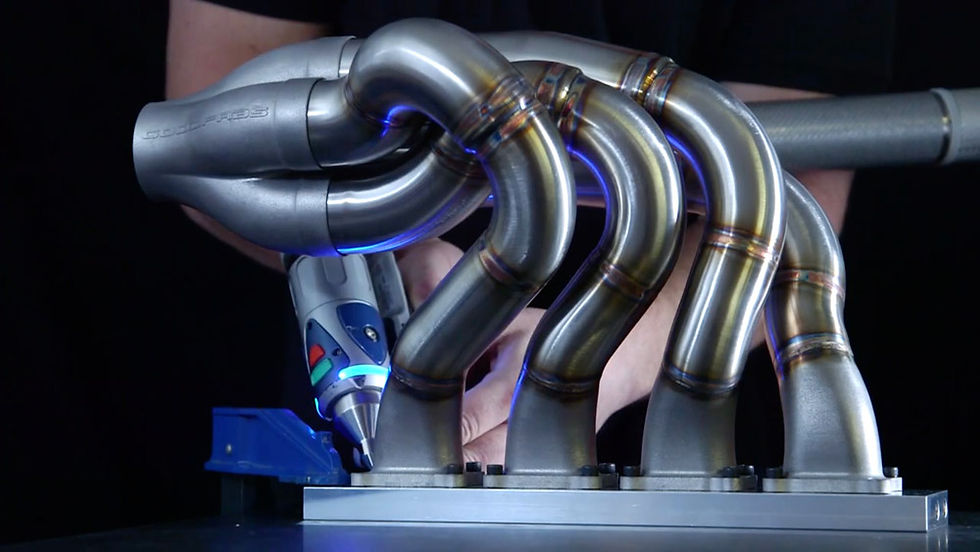Engineering exhaust merge collectors
- Good Fabrications Ltd
- Jun 12, 2017
- 2 min read

Almost every exhaust system uses some form of a merge collector. The key role for this merge collector and the most obvious one is to combine the exhaust pipes of the different cylinder into one tailpipe, which could flow to the turbo or the tailpipe.
A secondary role, not so obvious but equally – if not more – important is taking advantage of the exhaust gas dynamics and using the secondary exhaust tuning pulses as an advantage to the scavenging of the other cylinder exhaust pipes.
There are different exhaust set-ups possible when combining (and merging) the cylinder exhaust pipes which is often called cylinder pairing by racing engine builders.
The cylinder pairing is usually determined by the firing order where the aim would be to pair the even firing cylinders and the uneven firing cylinders to aid the scavenging in the paired cylinder exhaust pipe.
Certain engines (for example motorbikes, see GF-moto.com) might prefer the merging of 4 exhaust pipes into 2 exhaust pipes into the tailpipe (also known as Tri-Y).
Cylinder pairing
sometimes you would want to pair 2 cylinders first to merge into the tailpipe later rather than 4 cylinders at once (often called 4 – 2 – 1 systems) or sometimes just need to pair all 4 straight into the tailpipe (often called 4 - 1 systems). When to use one or the other depends on the engine characteristics where even firing high engine speed engines often use 4 into 1 exhaust systems where some specific uneven firing orders or lower engine speed engines might prefer 4 into 2 into 1 exhaust systems.
It is often said that the benefit of a decently designed collector is only noticeable below the peak torque engine speed of an engine, however nothing is less true. When designing an exhaust collector all aspects need to be taken into including the high engine speeds at which the engine might run.
At these higher engine speeds flow separation could occur where you would reduce the hydraulic diameter of the pipe where the exhaust gasses flow into and reduce the engine peak power.
In general it can be said that a 4 into 2 into 1 configuration would benefit the lower engine speed configurations where a 4 into 1 collector would benefit the engines with a higher engine speed.
The collector diameter
A well calculated collector merge diameter is very important in order not to create backpressure and restrict the flow of the exhaust.
One would say: “to make sure it’s enough, I will make the pipe as big as possible”.
This is not correct, to maximise the use of the paired scavenging effect, the exhaust gas velocity collector needs to be as large as possible without damaging the flow.
In a similar way as calculating the exhaust primary diameters one can calculate the collector geometry. However, there are a couple of extra variables where you need to take into account pulses and any overlap on multi cylinder engines.
If you want more information on this, you can always pre order our e-book or contact the office!



